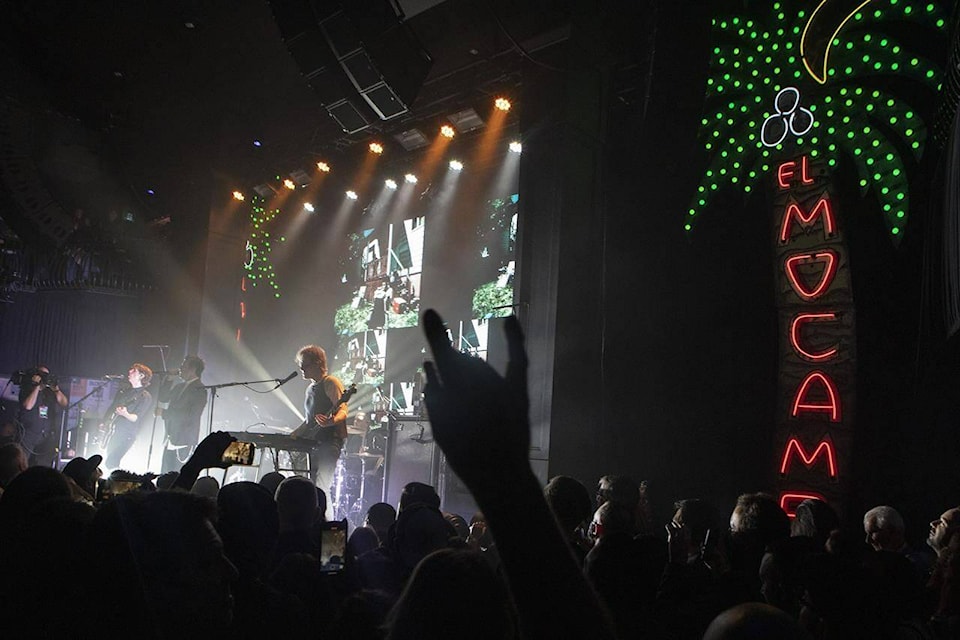TORONTO — Nearly seven years after audacious businessman Michael Wekerle began chasing the El Mocambo’s famous palm tree neon sign, he’s finally opened the concert venue that came with it.
The former “Dragon’s Den” cast member snipped the ceremonious ribbon on Saturday night in decidedly homegrown fashion inviting Canadian alt-rockers Our Lady Peace to play a grand re-opening party for a crowd of 350 concertgoers.
“Most people get a puppy or a car, this guy buys one of the most famous venues in the world,” the band’s frontman Raine Maida half-joked shortly into OLP’s nearly two-hour set.
“Mike has saved the El Mocambo literally by himself. He’s a Toronto hero.”
It’s been a long road for Wekerle’s plan to resurrect the Toronto hotspot, located near the corner of Spadina Avenue and College Street. The venue has hosted global superstars, the Rolling Stones, the Police and Blondie among them, as well as some of Canada’s greatest musical talents, including the Tragically Hip and the Guess Who.
But Wekerle weathered unexpectedly huge costs and numerous delays as he effectively gutted the building and rebuilt the insides. And then there was the COVID-19 pandemic which put the damper on an April Fool’s Day opening party planned for last year.
He tells everyone the joke was on him.
“I’m ecstatic that we’re here,” Wekerle said shortly before the venue doors opened.
“However, when I first came to buy the sign there were many days when I wished I bought only the sign.”
For Wekerle, everything comes back to that seductive palm tree glow, which has become a Toronto landmark for music fans.
In 2014, when it seemed the El Mocambo was closing for good, Wekerle knew he wanted to save the sign. As the story goes, he contacted the building’s owners, who told him he could have it for free, if he bought the whole property.
At the time, Wekerle said he was paying $3.8 million for the space, but the neglected 73-year-old building needed extensive renovations to get it back into shape.
By the time it was finished, saving the El Mocambo cost something closer to $35 million. Representatives for the venue say much of those expenses were for gutting the entire building and restarting from the ground up so it could survive well into the future.
Wekerle said he still got the neon sign for free.
The new “El Mo” will be unrecognizable to concertgoers who held a fondness for its dingy floors and tattered décor. All of that has been stripped out and replaced with a neon-bulb hue that evokes the Las Vegas Strip more than it does a Toronto dive club.
On the second floor, the original sign once outside now adorns the wall, split into two and framing both sides of the main stage. The one outside the venue is a replica that Wekerle calls the “2.0 sign,” ready to survive many Canadian winters.
The new El Mocambo is a multimedia monster filled with state-of-the-art equipment capable of recording and live streaming concerts, as well as shooting videos. There’s also a production studio on its top floor where performers can lay down an album.
Our Lady Peace plans to test out that technology, promising each ticketholder a vinyl copy of the El Mocambo show where they played their hits “4 a.m.,” “One Man Army” and “Innocent” alongside cuts from their upcoming album “Spiritual Machines II.”
“What Mike Wekerle has done with this place is seeing into the future of what clubs need to be,” said Maida.
“I think it’s brilliant.”
